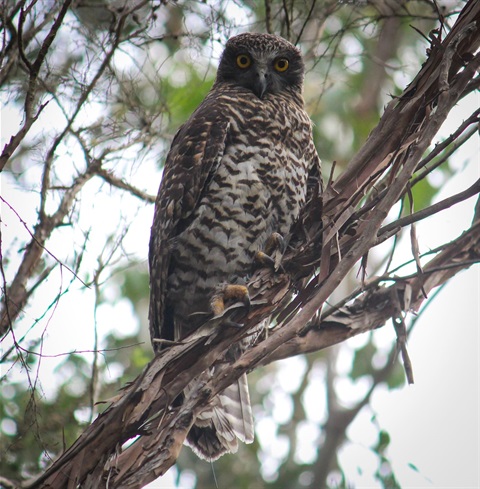Powerful owl secrets being revealed

Australia’s largest owl species calls the Surf Coast Shire home, and Council is helping uncover its secretive habits.
The Powerful Owl is a threatened species in Victoria and difficult to detect, monitor and research.
But a project led by Deakin University PhD student Nick Carter, supported by Council, has GPS-tracked specimens in the Great Otway National Park uncovering some of their secretive nocturnal adventures.
GPS monitors collect invaluable data on Powerful Owl movement and behaviour, with the aim of identifying more effective and targeted ways to conserve the species.
Powerful Owls are large birds and grow to up to 65cm long, with wingspans of more than one metre.
They need forest habitat to live, relying on large hollow-bearing trees to breed and raise chicks, and they mate for life which can be up to 30 years.
The birds fly silently in the bush to hunt prey like possums and gliders.
Loss of habitat and secondary poisoning from rodenticides has significantly impacted their population.
Not using rodent bait around the home is the best way to prevent secondary poisoning but if it can’t be avoided look for ‘multi feed kill’ or ‘first generation anticoagulant rodenticide’. Poison labelled ‘single feed kill’ should be avoided.
Researcher Nick suggests that if people would like owls at their property, particularly to help reduce possum numbers, they should support revegetation projects, protect native habitat and stop using deadly rodenticides that cause problems for a range of wildlife.
He encourages people to use citizen science apps to report any Powerful Owl sightings across Surf Coast Shire, or to email him at nbca@deakin.edu.au particularly if any roosting sites or breeding hollows are identified.
Follow his work on Instagram.